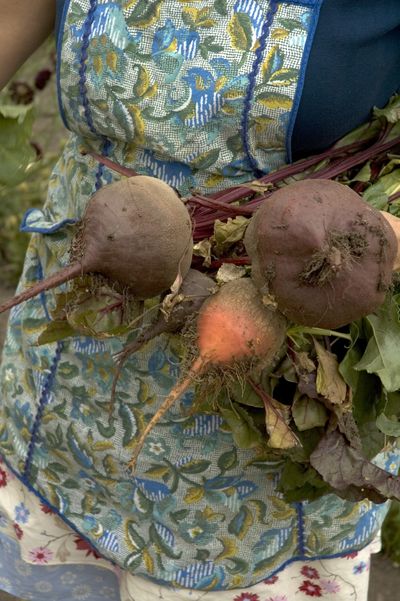Organic, One Step at a Time

At long last, organic eating is proving to be more than another health food fad. For those of us who have embraced “organic” since long before it was a catch phrase, this is certainly welcome news. Finally, the rest of the world is on its way back to a better way of eating, a better way of living. More and more people are seeking out the organic label because they want to eat the way nature intended, without all of the cheap fillers and toxic pesticides. Organically grown fruits, grains and veggies are not doused with bug sprays, synthetic fertilizers, antifungal treatments, or radiation — and they’re not genetically modified. Organic meat, eggs and dairy products come from more humanely raised animals that haven’t been pumped full of antibiotics or growth hormones.
According to the Environmental Working Group (www.ewg.org), a nonprofit environmental research organization, “There is growing consensus in the scientific community that small doses of pesticides and other chemicals can adversely affect people, especially during vulnerable periods of fetal development and childhood when exposures can have long-lasting effects. While washing and rinsing fresh produce may reduce levels of some pesticides, it does not eliminate them. Peeling also reduces exposures but valuable nutrients often go down the drain with the peel. The best option is to eat a varied diet, wash all produce, and choose organic when possible to reduce exposure to potentially harmful chemicals.”
Another reason to support organic agriculture is that organic farms are generally smaller-scale and conservation-conscious, which means that they strive to reduce the impact of their practices on natural resources. So when we buy organic, we benefit our farming neighbors and the land we all share.
Does organic food taste better? It’s your call, but I will tell you this: In 2002, when chimps at the Copenhagen Zoo in Denmark were given a choice between organic and nonorganic bananas, they systematically chose the organic bananas and ate them with the skin on. When they got around to eating the nonorganic ones, they peeled them first!
Switching to organic doesn’t mean you have to break the bank or give up your favorite foods. By switching to organic versions of just a few foods that you eat often, you can cut a bunch of chemicals from your diet without noticing major changes in your grocery bill.
Here are seven foods to start with:
Dairy Products: Milk, yogurt and cheese are considered healthy bone-strengtheners, especially for children, but the additions of hormones and antibiotics undermine the simple goodness of commercial dairy products.
Potatoes: They’re an American staple, but commercially farmed potatoes are some of the most pesticide-filled vegetables, and they still contain residues after being washed and peeled.
Meat (including poultry and eggs): Animal products can contain antibiotics, hormones and even heavy metals like arsenic that is used to prompt an animal’s rapid growth.
Ketchup: Even besides the pesticide issue, research has shown organic ketchup has nearly double the good-for-you antioxidants of conventional ketchup.
Apples: We love ‘em, but apples are some of the most pesticide-filled fruits out there. These days, an organic apple a day is the key to keeping the doctor away.
Coffee: Conventional coffee farming relies heavily on pesticide use and contributes to deforestation around the globe.
Nuts and seeds (including peanuts and nut butters): Pesticides and fungicides are rampant in the production of these foods, and many varieties are bleached after harvest. According to the Moscow Food Co-op (www.moscowfood.coop) here in my hometown, organically grown nuts and seeds are less likely to be affected by fungus since they are more likely to have been raised in ecologically balanced soil.
The Environmental Working Group has developed the “Shopper’s Guide to Pesticides in Produce,” now in its 5th edition, which features a ranking of 43 fruits and veggies according to their pesticide content. The list is based on the results of nearly 43,000 tests for pesticides in produce collected by the U.S. Department of Agriculture and the U.S. Food and Drug Administration between 2000 and 2005. Armed with this info, you’ll know which produce is best to buy organic, and which options will suffice when organic isn’t available. Get your copy of the “Guide” at www.foodnews.org.